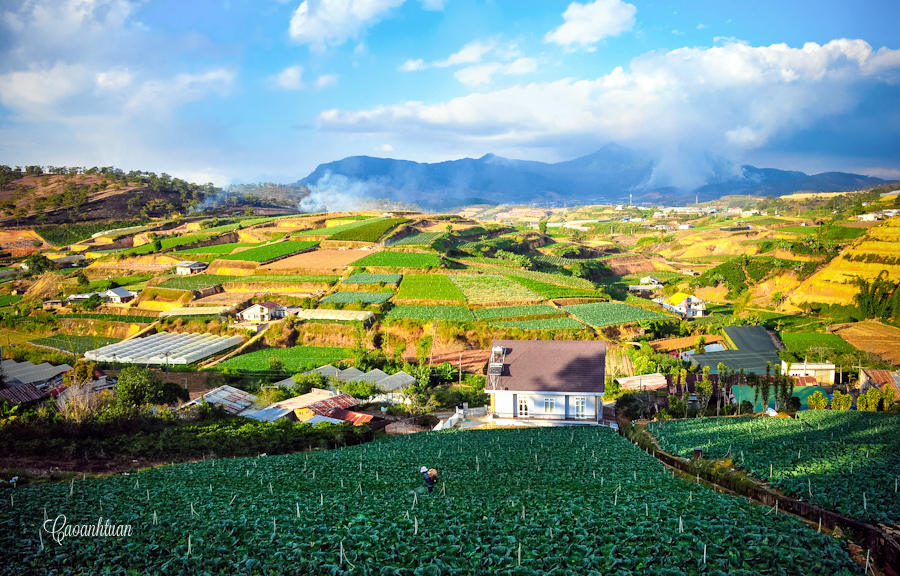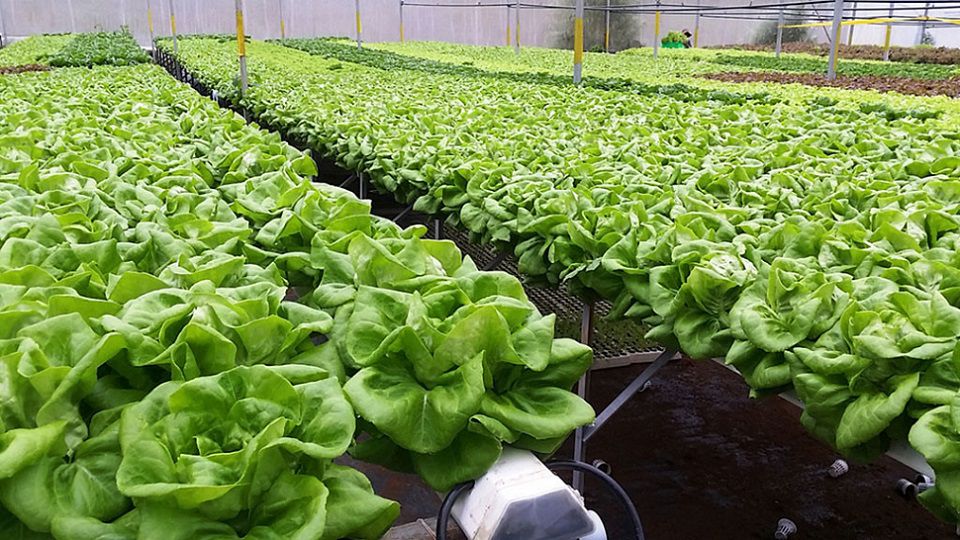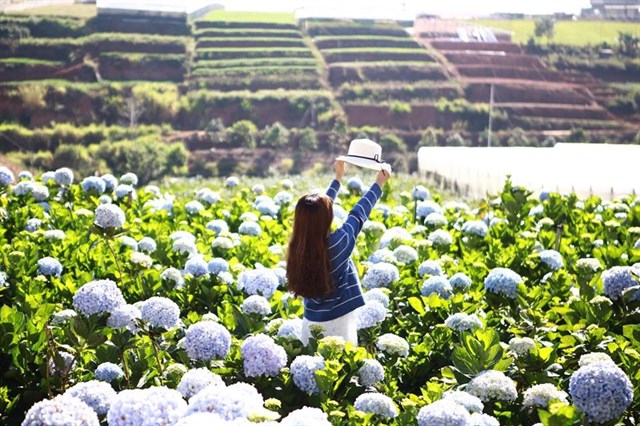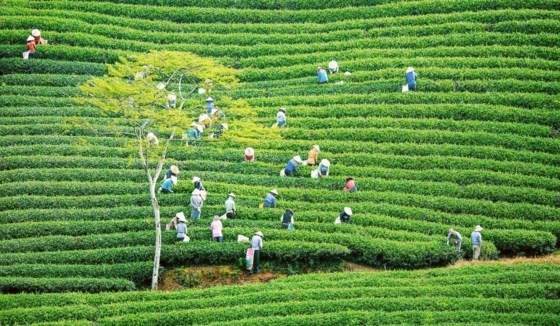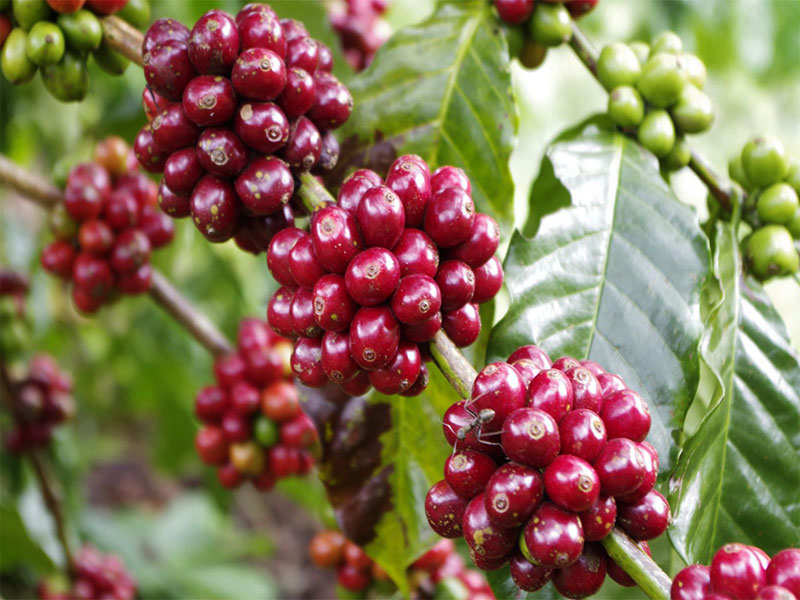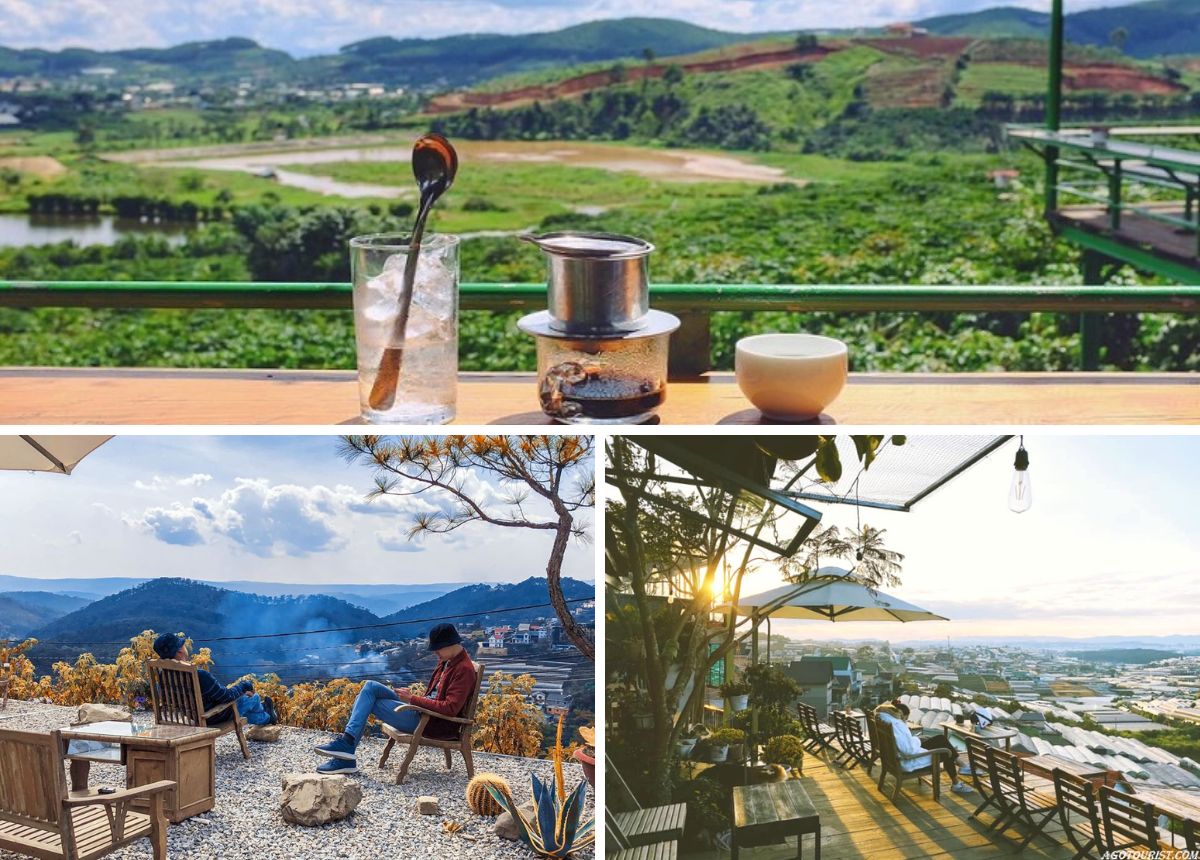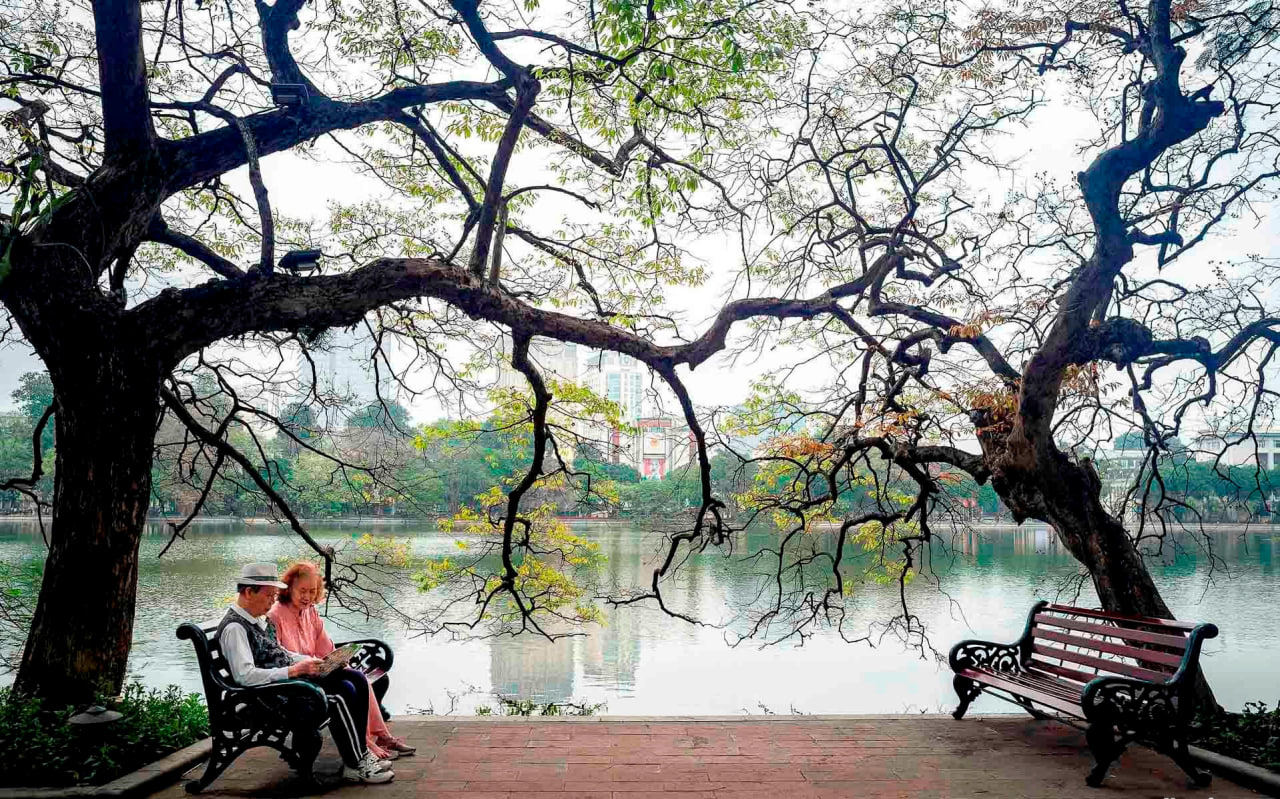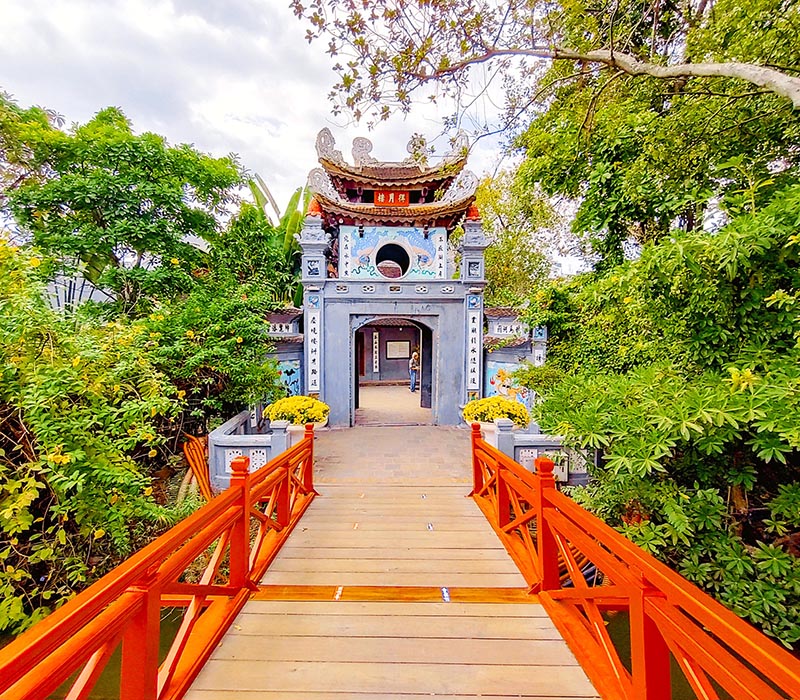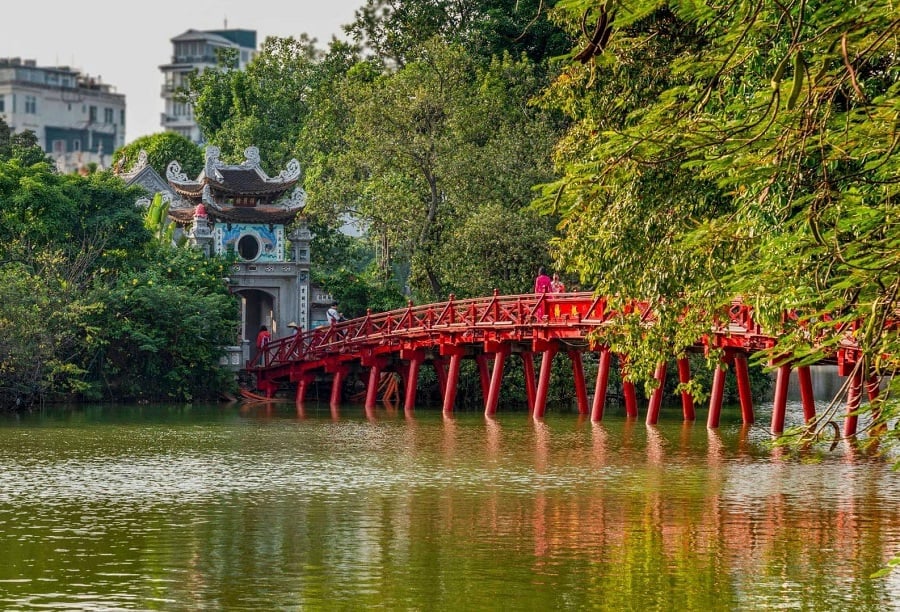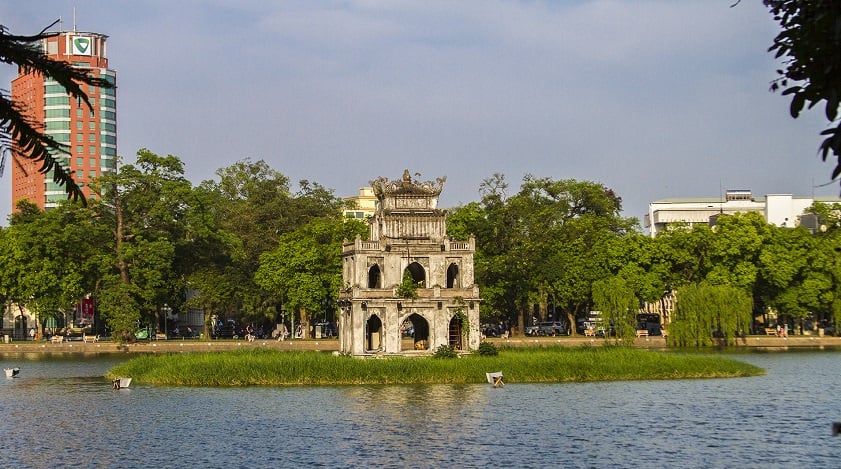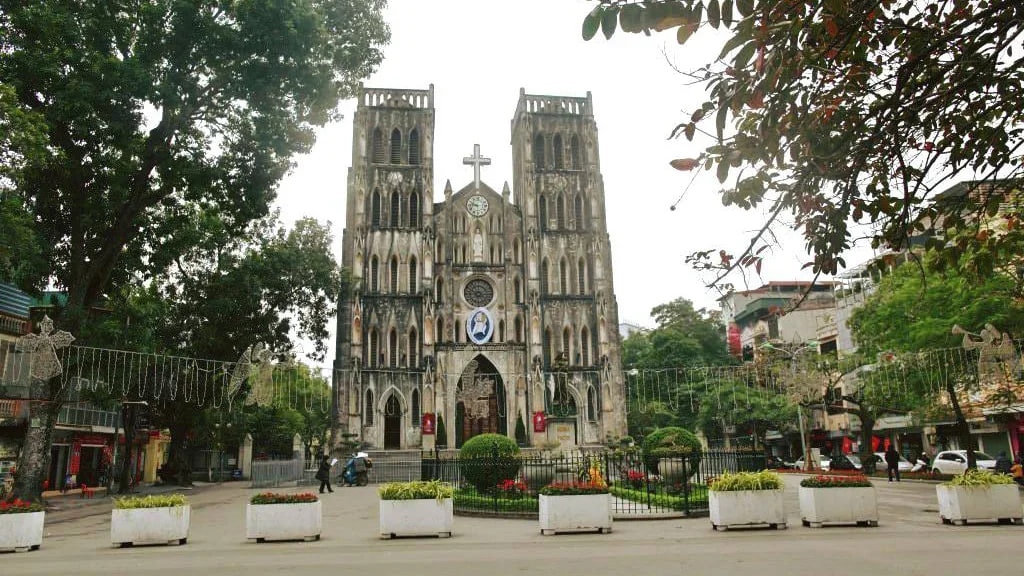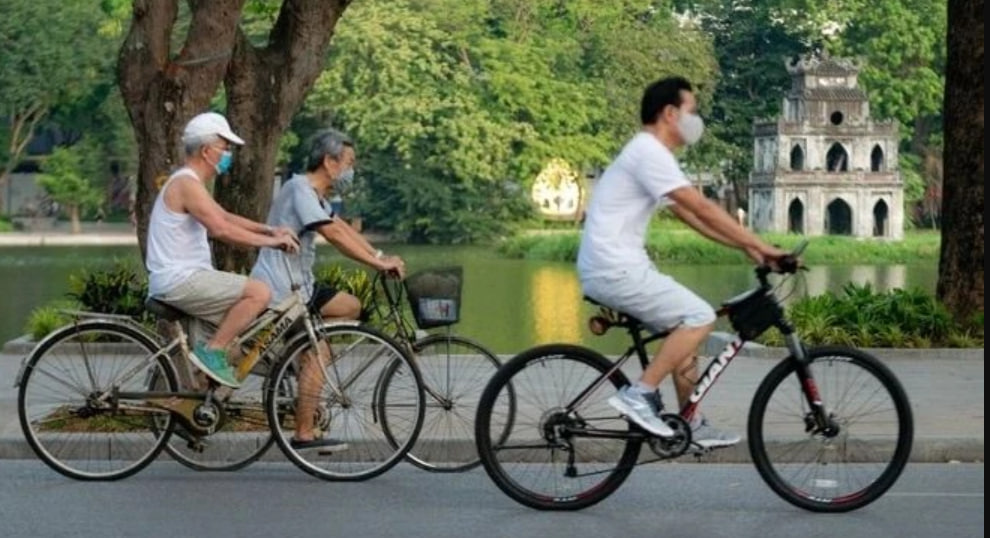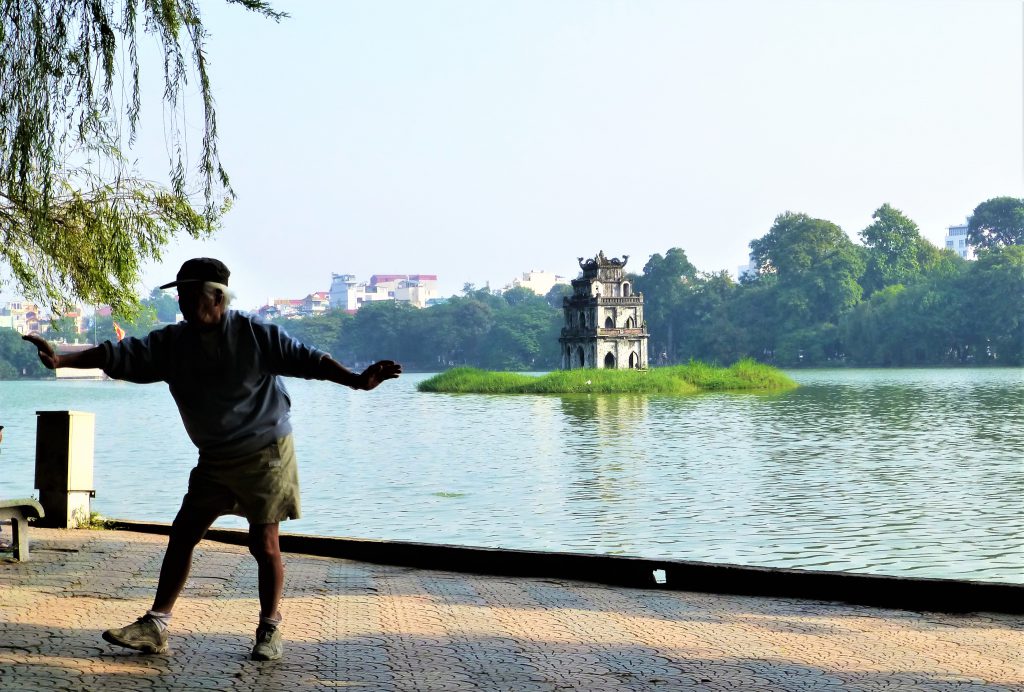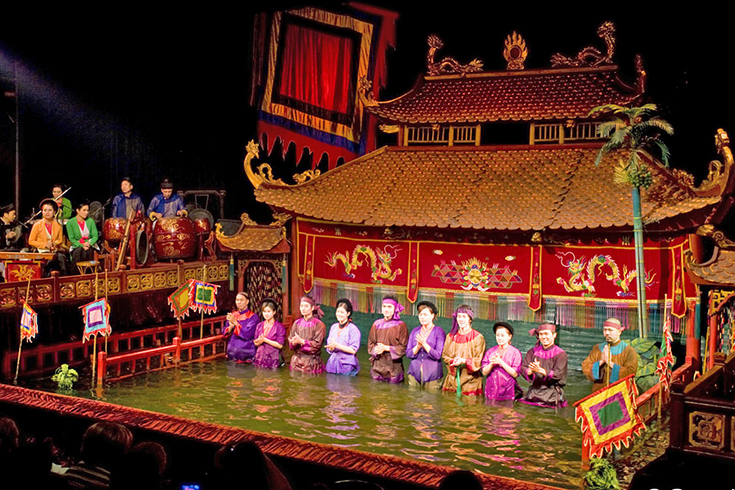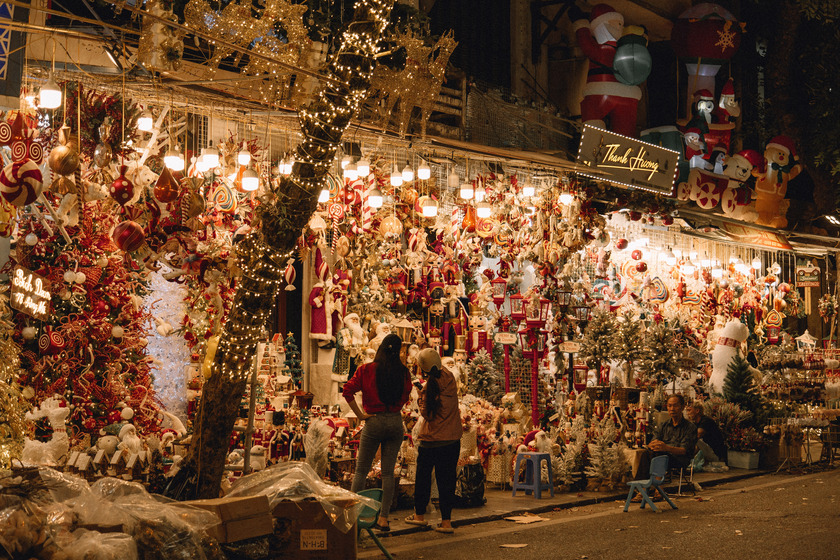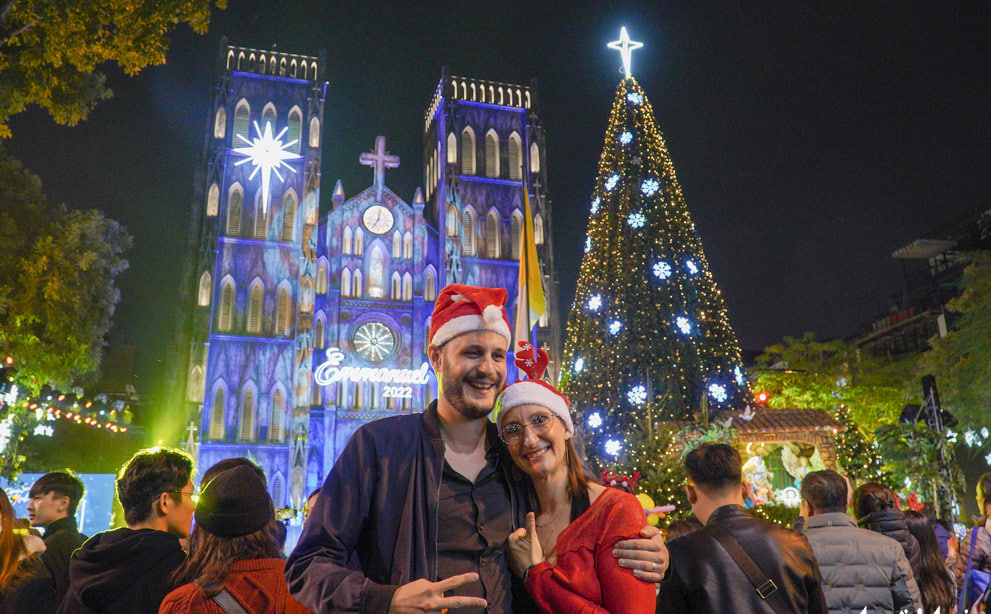The Ngo Mon Gate, also known as the Meridian Gate, is closely linked to the Hue Imperial Citadel, and both locals and expatriates believe that studying this ancient citadel offers valuable insights into Hue’s culture and Vietnam’s history. Widely regarded as a masterpiece in many ways, the gate, along with the Truong Tien Bridge, the Flag Tower, and the Thien Mu Pagoda, is considered one of the most iconic landmarks of Hue City. It is also a key part of the Complex of Hue Monuments, which has been designated as a UNESCO World Heritage site.
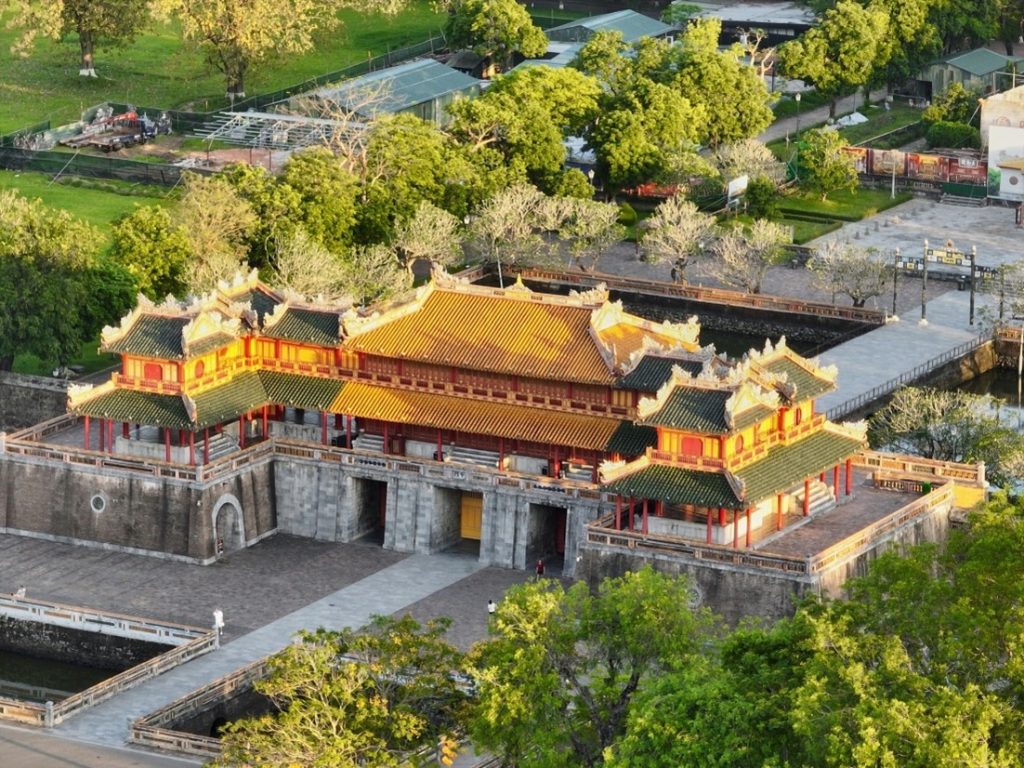
Location: Hue Imperial Citadel Complex, Phu Hau, Hue City, Thua Thien Hue
Opening hours: Everyday from 7:00 to 17:00
I. History of Ngo Mon Gate
1. Construction
Ngo Mon Gate, the primary southern entrance to the Hue Citadel, is considered the symbol of the Imperial Wall and the feudal dynasty. It was constructed during the reign of King Minh Mang, the second emperor of the Nguyen Dynasty.
In 1833, alongside the renovation of the Nguyen Dynasty’s palace, King Minh Mang commissioned the construction of the Ngo Mon Gate, the main southern entrance to the Imperial City. Prior to this, several structures occupied the site, all of which were dismantled to make way for the new gate. During the Gia Long Era, the area featured Nam Khuyet Dai, a viewing platform, atop which stood Can Nguyen Palace, a place for sightseeing. On either side of this platform were two doors: Left Doan Mon and Right Doan Mon.
In 1968, following the Battle of Mau Than in Hue, Ngo Mon Gate was heavily damaged. It wasn’t until 1970 that the gate, along with several other affected structures, was repaired.
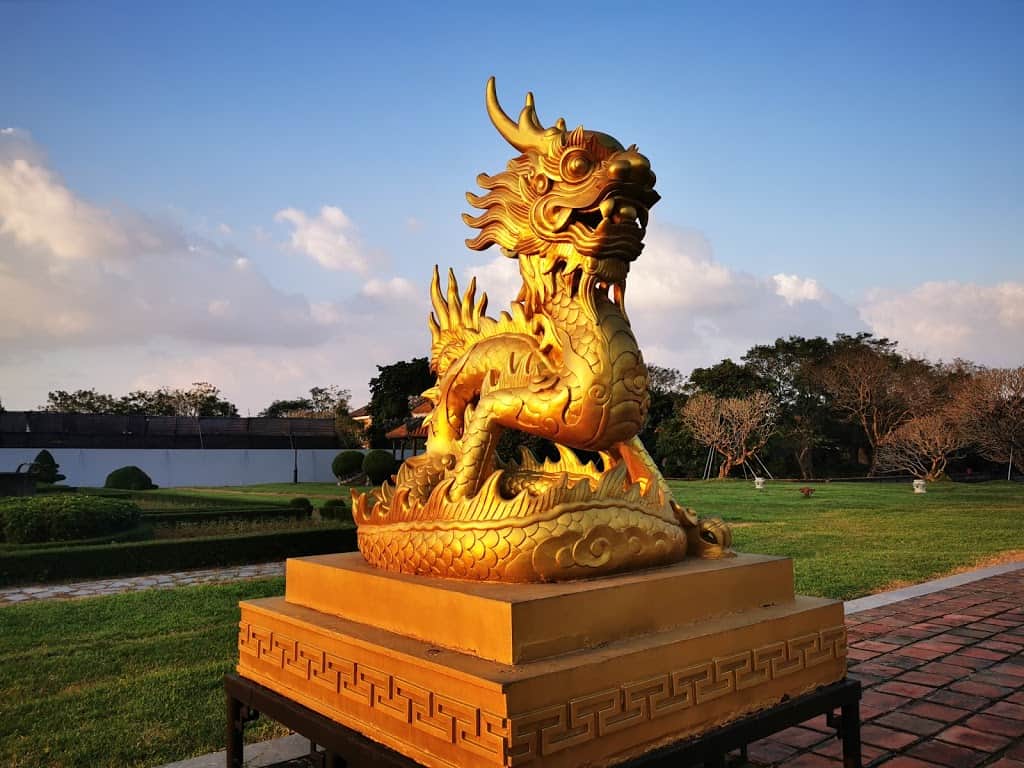
2. The name
According to Kinh Dịch, the King always sits facing south to govern the world. As a result, the entire Imperial Citadel was constructed based on the principle of “Toa can huong ton” (Northeast-Southwest) to reflect this alignment. The Imperial Wall has four gates, with Ngo Mon being the largest. The term “Ngo” in the gate’s name refers to the south, the direction it faces. Although some might confuse Ngo Mon with Noon Gate (since “Ngo” can also mean noon in Vietnamese-Chinese), it is more accurately translated as the Meridian Gate.
According to the compass, the south is associated with the “Ngo” direction on the “Ty-Ngo” (north-south) axis. Therefore, the name “Ngo Mon” refers to space and direction, rather than time. (In Vietnamese-Chinese, “Ngo” also means noon.)
Although Ngo Mon Gate was the main entrance, it was rarely used for its symbolic purpose. It was primarily reserved for the King and his entourage when entering or leaving the Citadel, as well as for welcoming important delegates.
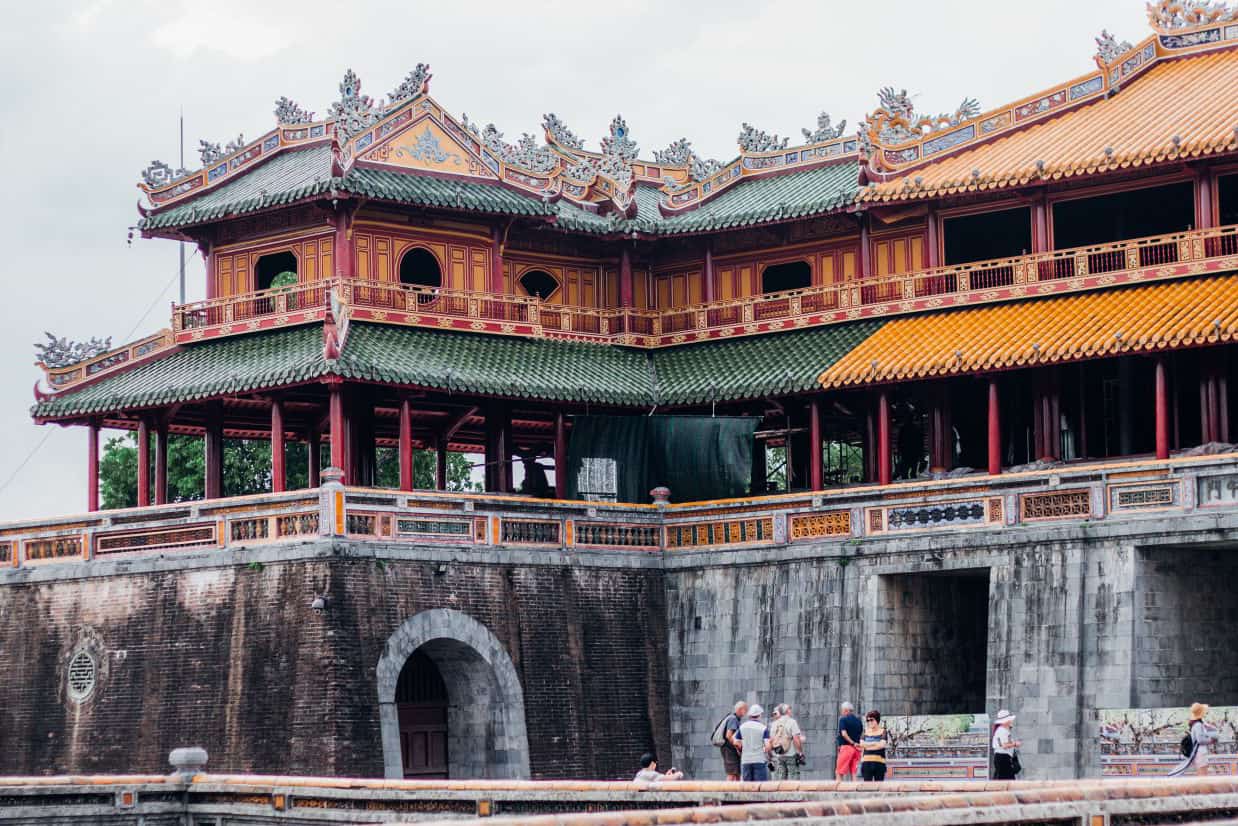
3. Function
Functionally, Ngo Mon Gate serves not only as the entrance to the Imperial Wall but also as a ceremonial gateway leading to a key structure within the Citadel – the Ky Pedestal.
The Ngo Mon Gate has borne witness to significant events in Vietnamese history, including the Truyen Lo ceremony, where martyrs who earned the Doctor title were honored, the Ban Soc ceremony, during which the King distributed calendars, and various parades. However, the most momentous event to occur at Ngo Mon Gate was the abdication of King Bao Dai, the final monarch of Vietnam’s feudal dynasty, on August 30, 1945.
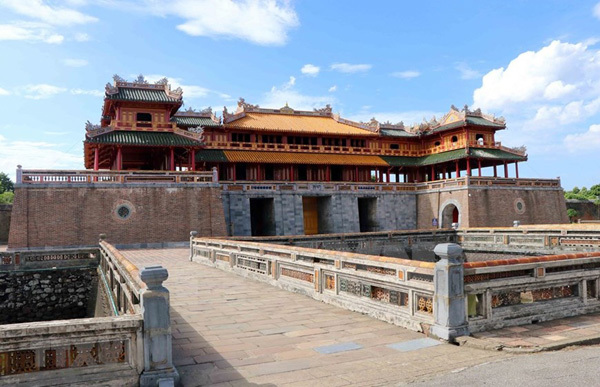
4. Meaning and Values
Having endured 180 years of time, nature, climate, and wars, the Ngo Mon Gate remains standing strong to this day, becoming a lasting symbol of Hue.
Dr. Phan Thanh Hai, the former Director of the Hue Monuments Conservation Center, remarked on the Ngo Mon Gate: “Amidst the shade of trees, flowers, and water, the Ngo Mon Gate in Hue evokes a sense of calm and tranquility. Perhaps this is why the image of this gate has naturally become a symbol of Hue.”
The Ngo Mon Gate embodies the enduring values of the aristocratic society. Transcending political and temporal influences, it has become a symbol of Hue, forever standing as a beautiful representation of the ancient capital.
II. Highlights of Ngo Mon Gate
Ngo Mon Gate, a gate constructed in the southern directions, has long been renowned for its massive scale and unique architecture. Ngo Mon is actually referred to as the location of the gate instead of midday or noon translated from some sources. Understanding its true meaning is of great importance as it serves as a hint about the position of Ngo Mon gate in the overall architecture of Dai Noi.
This is a very convenient location for visitors to appreciate the scenery of Hue Citadel because Ngo Mon Gate is the main gate to the Imperial City in Thua Thien Hue province. As a first-time tourist, I highly recommend you join a guided sightseeing tour of Hue Citadel to have a firm grasp of famous tourist attractions. As regards ones who have already visited here or adventurous tourists, it is worth trying exploring this citadel on their own for new experiences.
1. Architecture
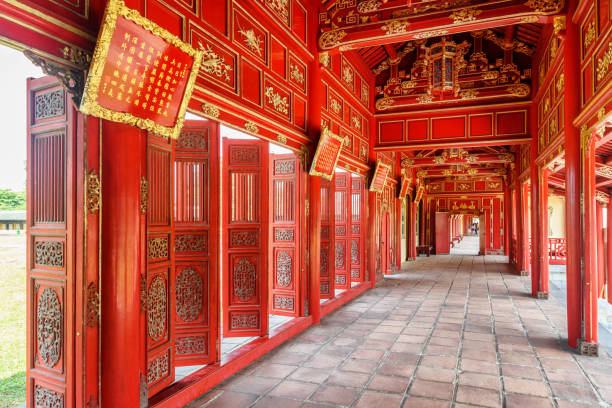
The Ngo Mon Gate is a quintessential example of ancient architecture, representing the spirit of both Mount Ngu Binh and the Perfume River, which are central to the identity of Hue. Despite enduring more than 150 years of war and natural disasters, the gate has withstood the test of time due to its masterful construction techniques and architectural artistry. Its enduring significance and intangible cultural value remain as cherished as ever.
The Ngo Mon Gate is architecturally impressive and sophisticated. In fact, it is often compared to the Ngo Mon Gate at the Beijing Palace due to its resemblance, yet it distinctly showcases traditional Vietnamese architectural styles. Beyond its unique design, the gate also serves as a historical landmark, evoking memories of Vietnam’s long feudal past, as guided by the detailed explanations of its tour guides.
This building is located in a unique terrain. From the Ngu Phung Pavilion, visitors can enjoy a panoramic view of the entire Hue Citadel. The most striking feature is the Flag Tower, topped with a red flag adorned with a yellow star. This monumental structure is a significant historical landmark. On August 23, 1945, the flag of the Democratic Republic of Vietnam was raised here for the first time, symbolizing the end of the monarchy. Further ahead, visitors can cross the Trung Dao Bridge over Thai Dich Lake to reach the Thai Hoa Palace and continue toward the Dai Trieu Nghi courtyard.
Ngo Mon Gate deservedly earns a place in the toplist of the best art works of Nguyen Dynasty in particular and of Vietnamese age-old architecture in general. Despite years of ups and downs, as a witness of many revolutionary historical changes, Ngo Mon Gate still retains unique architectural features of primitive times. It is not only a symbol of the ancient capital but also a representation of engineering construction techniques in the past. Ngo Mon Gate is a harmonious combination of domestic and foreign materials and old hands’ skills, which greatly contributed to a well-established architecture for many centuries.
2. Structure
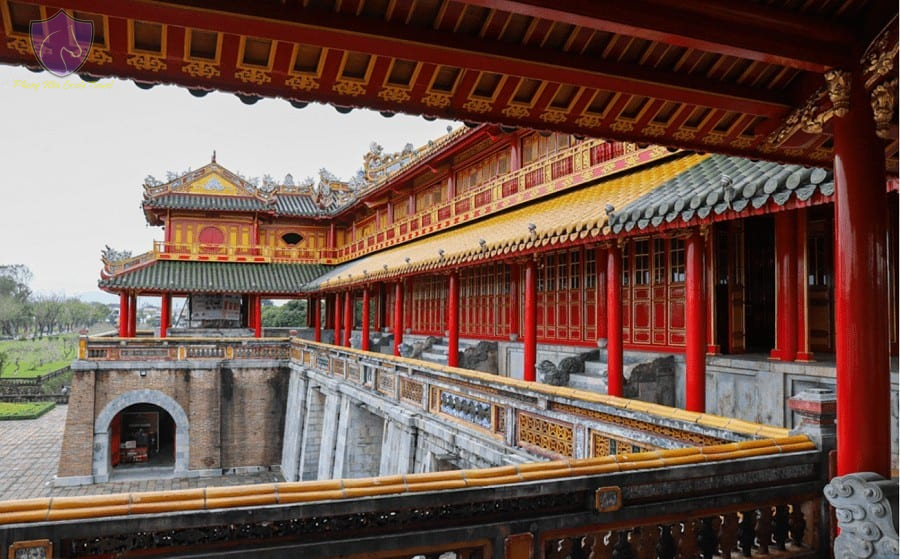
As regards its structure, Ngo Mon Gate comprises two main parts: the ground level – Dai and the upper level – Ngu Phung Pavillion. The former resembles a fortress made of brick and stone, whereas the latter has a much more elaborated structure.
The Dai has a perpendicular U-shaped structure, of which the length and the width are 57.77 metres and 27.06 metres respectively. The ground level constructed of brick and stone, together with durable bars made of brass, is nearly 5 metres high, occupying an area of more than 1,560 square metres. This part serves as a firm foundation as it is very thick with an almost vertical slope, enabling the whole structure to maintain its shape over time. Be that as it may, this ground level still brings a stately feeling to its appreciators.
The Dai has five entries in total, each of which is exclusive to a particular position in the dynasty. For instance, the central main entrance (Ngo Mon Gate) was, as far as I’m concerned, reserved for the King only, mandarins, soldiers followed by horses and elephants were allowed to use two small U-shape side entries, and the rest including commoners could only use two outermost entrances. The top of all five entrances looks like a big high arch strengthened by brass crossbars. Furthermore, the exterior is copper foil laminates to add an air of aesthetics to the appearance of Ngo Mon Gate.
Above the group level is Ngu Phung Pavilion – Five Phoenix Pavilion consisting of two floors, and the frame structure is entirely made of iron wood with even 100 pillars. The name has its origin from the elegant appearance of the pavilion – five phoenixes flocking together.
There are 13 rooms with 5 roofs built in a row. What makes Ngu Phung Pavilion unique is that 5 roofs are divided into 2 lines, each of which is made of 2 roofs. The lower roof is connected, running along the ground level to serve as a shelter to cover the corridor. The upstairs roof is divided into 9 sets including the central roof set – Yellow-tiled roof and the remaining eight sets – Green-tiled roof. These all factors complement one another in the seemingly impeccable pride of Vietnamese architecture.
I am certain that you will be impressed by Ngo Mon Gate due its architecture which is completely a far cry from the contemporary one. Don’t forget to bring a camera while visiting here because you may want to take some photos of the breathtaking scenery in Ngo Mon gate – a part of The Complex of Hue Monuments. During the opening hours, rarely do I drop by without seeing a crowd of people in front of this complex.
III. Facts and Tips
Ngo Mon Gate has been restored to its former glory, and the conservation center of the Complex of Hue Monuments will continue working on research into reliving meaningful past events to provide tourists with an excellent memorable trip.
Visiting Hue affords a great many opportunities of gaining hands-on experience about residents’ life and enjoy the hustle and bustle which is pretty typical of cities in Vietnam. You can drop by some vibrant and bustling local markets and if you feel interested and curious, I will highly recommend Dong Ba Market – a very popular one in Hue.
Hue Festival usually takes place around April to May every year, so this is the busiest and most crowded time of the year, for quite a few extremely attractive cultural and artistic activities are organized here. However, if you travel to Hue during this time, you should have a thorough plan, and it’s best to book in advance. One more thing to note is that prices will also increase much higher during tourist seasons.
To enter the Ngo Mon Gate, you will have to buy an entrance ticket outside the Imperial City. Each person is required to hold it in hand, enabling an easy control. As a visitor, you should dress politely, not wear underarms or short clothes, especially when visiting places of worship in the palace and sanctuary areas. Regulations state that filming and taking pictures in these places are also not allowed. In addition, do not carry explosives and flammable substances in any circumstances, and smoking is forbidden inside palaces or places of worship.
Hopefully, these fundamental and mandatory things give you an overall view about this tourist attraction. Let’s visit Ngo Mon Gate for a fun trip and the most enjoyable experience.
Come and experience Hue on your next trip, and create unforgettable memories of Vietnam by securing your Vietnam visa at https://vietnamvisapro.net/. As a trusted and reliable visa service, we are here to help turn your dream vacation into reality from the very first step.

